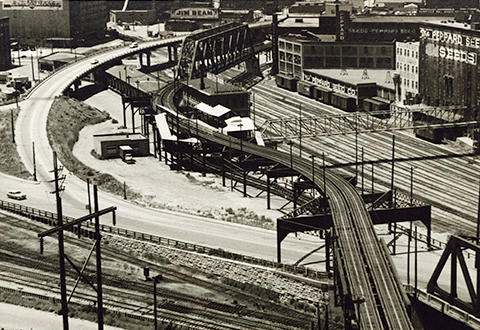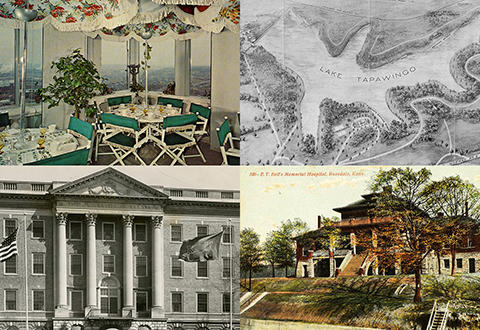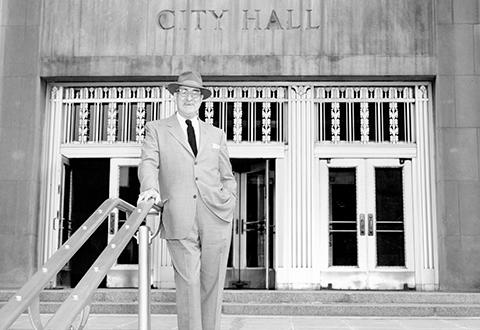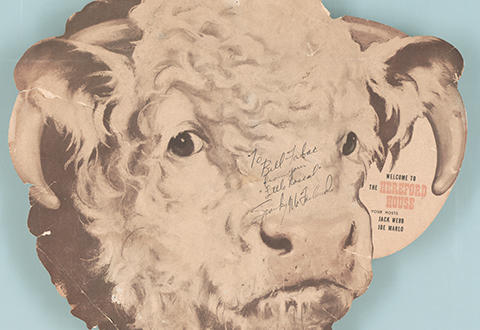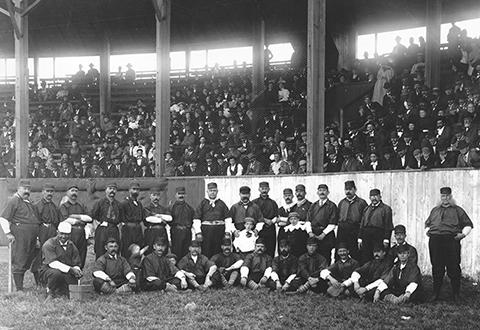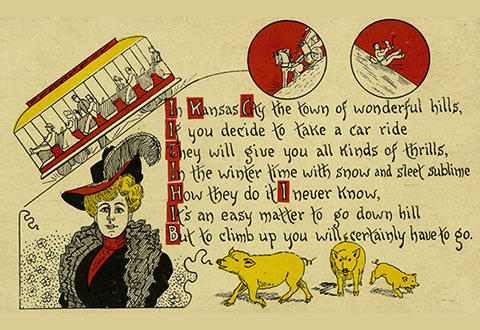Missouri Valley Special Collections staff have been hard at work adding new content to KCHistory. Below, you will find a list of newly digitized objects added to the site during the month of June.
Local History Blog
For this installment of “What’s Your KCQ?,” the joint project of the Kansas City Public Library and The Kansas City Star, Missouri Valley Special Collections staff tackle a variety of Kansas City history questions. What’s the small projection on the north side of Commerce Tower near the top of the building? When Commerce Tower at 911 Main Street opened in 1964, one of the modern office building’s many amenities was the Top of the Tower restaurant on the 30th floor. Rather than a single dining experience, Top of the Tower offered diners five distinct experiences: the Mongolian-themed Genghis Khan, the Irish-themed Paddy’s Pub, the Italian-themed Guiseppe’s Roof, the German-themed Salzberg Haus, and the French-themed Tour d’Argent. An advertisement from the building’s opening promised diners “an unparalleled view of Kansas City’s surging skyline and the countryside beyond,” and with the 180-degree view south toward the river made possible by the small projection, the statement rang true.
At the turn of the 20th century, Kansas Citians seeking respite from urban life had only to travel a short distance east to enjoy camping, floating, and fishing at a popular recreational destination, the Blue River. Yes, that Blue River – the now muddy, mostly forgotten waterway that winds through rural, suburban, and industrial areas of Kansas City before emptying into the Missouri River in eastern Jackson County. A reader had seen images from the early 1900s of cabins and houseboats lining the Blue River near East Truman Road, or 15th Street. The area is now a manufacturing district, and he found it hard believe it once attracted crowds of boaters and vacationers.
Missouri Valley Special Collections staff have been hard at work adding new content to KCHistory. Below, you will find a list of newly digitized objects added to the site during the month of May.
We need your help with this one. When construction ended in 1967, the Giralda Tower became the tallest structure on the Country Club Plaza. A smaller version of the more than 800-year-old Giralda tower in Seville, Spain, it included a carillon of 600 bells that could be operated manually or by an automatic roll player. Originally, the bells were set to chime on the hour and music was played daily.
In 1946, Kansas City found itself at a crossroads. The rise of the suburbs and decentralization posed a threat to downtown, creating a postwar existential crisis for the city. Swift action was needed to halt urban decay and ensure future growth. With a tax base on the decline, expanding into unincorporated land was a logical solution.
Missouri Valley Special Collections staff have been hard at work adding new content to KCHistory. Below, you will find a list of newly digitized historical photographs, maps, books, and other objects added to the site during the month of April. Enjoy!
It was a hot June night in 1943, and Frances Angermayer could not sleep. So, she arose after midnight, went to her typewriter, and—in twenty minutes—wrote what was to become the most famous poem of World War II. This week’s “What’s Your KC Q?” explores the astonishing story of “Conversion,” a verse about a soldier’s talk with God that brought hope to millions of readers during the height of the war. The poet, an unassuming secretary from Kansas City, could not have foreseen that her simple composition would find its way into the hands and hearts of countless soldiers across the globe.
With the Major League Baseball season underway and the Royals faithful cheering on their boys in blue, it is fitting for What’s Your KCQ? to get a curveball about a possible KC connection regarding the origin of baseball “fans.” While flipping through a 1990 publication, On This Day in America, a reader came across an entry for March 26, 1889, that credits The Kansas Times and Star with referring to followers of baseball as “fans” for the first time. The reader asked KCQ to investigate whether it was true and if the newspaper referenced actually was The Kansas City Star or Times.
Missouri Valley Special Collections staff have been hard at work adding new content to KCHistory. Below, you will find a list of newly digitized historical photographs, maps, books, and other objects added to the site during the month of March. Enjoy!

